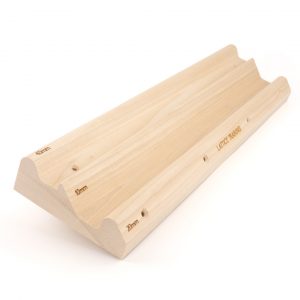Optimising Strength Training and The Menstrual Cycle (Part 1)
In this article, Coach Maddy Cope look at the theory behind optimising the training we do during each phase of the menstrual cycle. Hormones fluctuate throughout the entire cycle, not just during our period or premenstrual phase. We may be able to adjust how we approach training throughout to work with our physiology.
Optimising training – body literacy
Understanding your menstrual cycle in order to get the most out of training is largely about body literacy. This is building an awareness of the cues your body gives you. These differ during different phases of your menstrual cycle and understanding how these impact your training.
But what does optimising training mean? There are two common ways of optimising training. One is to look at what is going on in training. The other is to look at everything that is going on around training. We can look at being able to hit the right training stimulus at the right time. For example, trying to increase the load used on your pull ups on a day when you feel bloated and fatigued is not likely to be optimal. However, completing a lighter aerobic capacity session at this time will allow you to hit the training stimulus more easily. We can also look at fuel, stress, and sleep. For example, completing high coordination sessions after a poor night’s sleep is probably not going to be optimal. Whereas completing simple max hangs might allow the training stimulus to be met more easily.
Optimising training in line with the menstrual cycle is never about not doing something because of your cycle!
What Is Realistic?
I understand that the idea of considering our menstrual cycle phase in everything we do is both undesirable and unsustainable. There is a balance to be found. As much as I believe that our menstrual cycle phase may impact both our psychology and physical performance, there is a certain amount of “pushing through” needed in both training and climbing. Our menstrual cycle phase should not be the sole dictator of what we do and when. Nor should we allow our experience one month to predetermine how we will feel the next month. Trying to adapt training for every aspect of our menstrual cycle would be like trying to hit a moving target.

It might help to compare it to tracking your sleep when striving to achieve this realistic balance. So if an analogy for optimising training around the menstrual cycle is optimising sleep;
- You track your menstrual cycle symptoms and how they impact your training for a period of time. The same way you would track your sleep quality alongside things like stress or how much TV you watched before bed. You wouldn’t want to do this forever. You don’t want to get too obsessed over how many minutes you are getting each night. But it provides useful information about changes you could make.
- You pick your “low hanging fruit” and make a few changes. With sleep this could be not looking at any screens for 30 minutes before bed. With the menstrual cycle this could be arranging your rest week during the PMS phase.
- You continue with your changes for a period of time before checking in. In the same way that analysing your sleep every night probably isn’t useful, it is probably best to continue with your changes for a few menstrual cycles and then reflect to see if the changes have helped. If things have gone well you might revisit your tracking and introduce another change. With sleep this might now be the slightly “higher hanging fruit” such as trying a new pillow or not having caffeine past lunch. With the menstrual cycle it may be changing the focus of your training throughout a cycle.
What’s the research?
Before we dive into climbing training specifically, let’s take a moment to consider where these finer tuned ideas about training and the menstrual cycle are coming from. For me, the link between periods and sport goes back as far as my teenage years. This was when my fellow schoolmates started to drop like flies out of P.E. However, if institutes – from the EIS to England’s Rugby team – are starting to consider the menstrual cycle in training their athletes, they must be going off something more than this.
Research in the area of sports performance has historically been done using male participants. And this has been in part due to the complexity and expense that the menstrual cycle adds. For a while now, academics have chosen to put the menstrual cycle in the spotlight and explore the effect it may have on physical performance. So far the results have been extremely variable. We cannot say that on X day of your menstrual cycle your performance will be. A large number of studies have started out by looking at the impact of menstrual cycle phase on acute performance (a one off performance on a given day) in a simple strength or endurance based test (think leg press or time to failure on an exercise bike). And a recent meta-analysis showed that… there wasn’t a lot of difference.
Of course this can be spun in a very positive way. “It doesn’t matter what phase of your cycle you are in, you can perform your best all the time”. Some people might think “Great – why don’t we all just crack on then?”. Whereas others might be thinking “That’s weird, that doesn’t match up with my personal experience”. However, a large portion of the studies that were included are considered to have “poor” methodology. This is simply because research into the menstrual cycle in sport is relatively new. The best methods are still being established. Although a lot of studies have now been carried out, we still need to answer the question: How do we carry out rigorous studies in this area?
So the results are variable, but what are the researchers even looking at?
When it comes to research, it is worth being aware that researchers are looking for significant differences. This may not always be in line with a meaningful change for an individual. As we all know, climbing performance cannot be distilled down to a weighted pull up. Yet at the moment most studies are looking at performance in relatively basic strength or endurance tests. Hence the results may not reflect performance in a complex and multifaceted sport such as climbing. This may be the reason why, the overwhelming response is that athletes perceive the menstrual cycle to impact their sport despite no solid conclusions being drawn from scientific research.
An area where there is significantly less work is looking at adaptation to strength training over the course of the menstrual cycle. These studies look at different distributions of training throughout the menstrual cycle to see if any particular approach gives a better outcome. Cramps and motivation aside, this is where syncing training with the menstrual cycle as a way to optimise performance has evolved from.
As an interesting exercise, if I take the average age of menopause, and any pregnancy, breastfeeding, or menstrual disruption aside, I will have around 288 more menstrual cycles. So not going away anytime soon.

Gain then maintain approach to strength training
During the follicular phase (day 1 of bleeding through to ovulation) progesterone is low. Estrogen also starts off low, but rises throughout leading to a spike in estrogen that stimulates ovulation. In theory, this phase allows for better adaptations to strength training and shorter recovery times. Arguably this is par for the course as it is during recovery that adaptations to training actually occur. Therefore, this may be a good time to focus on our strength and high intensity training. It is important to remember that day 1 of the low hormone phase coincides with day 1 of bleeding. So shifting focus to strength and high intensity training may depend on the symptoms experienced during menses, such as cramps.
“This may be a good time to focus on strength and high intensity training.”
The theory behind the better adaptations to strength training during the follicular phase is that progesterone is low during this phase. Progesterone has catabolic effects on protein metabolism. Alongside this, estrogen rises during this phase and estrogen is anabolic. Catabolic processes are those where we break things down, and anabolic processes are those where we build things up. Muscle protein synthesis (MPS) is an anabolic process. Therefore, the rationale goes that low progesterone and increasing estrogen during the follicular phase allows for better MPS and recovery than during the luteal phase when progesterone is high.
This means that we can potentially optimise our training by focusing on making strength gains during this phase. Then maintaining them during the luteal phase. This is not done by only doing strength training in the follicular phase, and then none in the luteal phase. This is done by distributing strength based sessions between the follicular and luteal phases., with more sessions being completed in the follicular phase. By reducing the volume of strength training in the luteal phase, we are essentially increasing the recovery time between these high intensity sessions.
We can take the simple example of having 4 strength training exercises a week. (e.g. two bouldering, one fingerboard and one pull up session). Rather than doing 4 strength training exercises every week throughout our menstrual cycle, we may choose instead to complete 4 in our follicular phase and 3 in our luteal phase. The hope here is that we maintain the quality of these sessions and allow ourselves the time to recover from them. This could lead to better adaptations, more consistent energy levels, and make it less likely we might injure ourselves desperately trying to stick to what we could do the previous week!
“But I like doing 4 strength training exercises a week!” I know, I know, we never like the idea of dropping training sessions. Let’s explore a couple of options that don’t make us go stir crazy. (Though I think if the sentence above provoked a mild sense of panic, learning how to rest might be a good thing!). For example:
“I am a boulderer focusing on short, powerful boulders so most of my training is strength and power training”
- Reduce the intensity of some (not all!) of your strength sessions. This could be done by doing mileage or repeats on boulders you have already completed. Another option is to maintain the weights you are using in fingerboard or other conditioning sessions, rather than pushing them during the luteal phase. This approach of pushing followed by consolidation is a good way to make consistent and “safe” (i.e. reducing the risk of injury) training gains. So this is simply about syncing it with your cycle. On the face of it, it may feel like you are slowing the rate of progress. However this generally leads to a more sustainable process over time.
- Reduce the length of session or sets/reps in higher intensity bouldering or conditioning sessions.
- A level of endurance is still important for boulderers as this helps with PCr recovery (the energy system that fuels high intensity exercise). So you could switch out a strength session for a short interval style aerobic session.
- Use conditioning exercises with basic movement patterns in strength training during premenstrual phase where commonly reduced coordination can be experienced.
Stay tuned for Part 2 where we look at things to help your training during the high hormone phase.
If you have any questions or want to learn more about this topic, join the Lattice Women’s Training Facebook community page.







